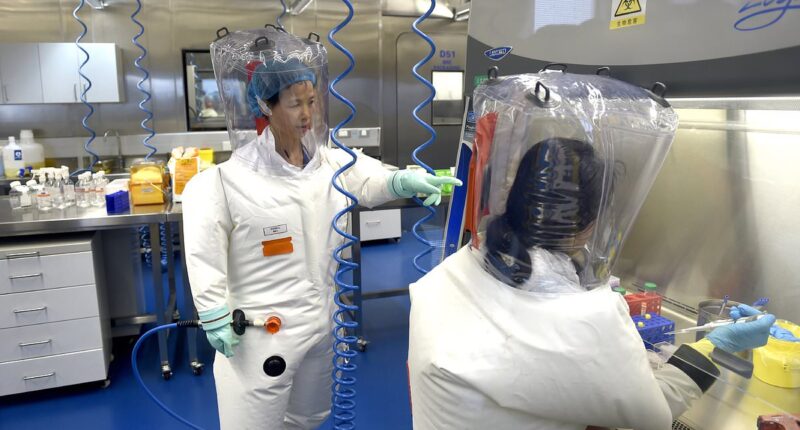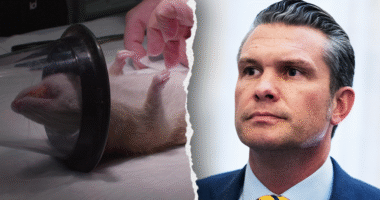A new coronavirus with the potential to spread among humans has been discovered by Chinese researchers.
A team led by virologist Shi Zhengli, known as ‘Batwoman’ for her work on coronaviruses, detected the new virus, HKU5-CoV-2, in bats in China.
HKU5-CoV-2 is similar to SARS-CoV-2, the virus that caused the global Covid-19 outbreak. It has a higher infectious potential compared to other coronaviruses because it enters human cells in a similar manner to Covid-19.
Among the numerous coronaviruses present in nature, only a select few have the ability to infect humans, with examples including SARS, SARS-CoV-2, and MERS (Middle East respiratory syndrome).
The new HKU5-CoV-2 is a coronavirus belonging to the merbecovirus group and is closely related to MERS.
Through laboratory experiments, researchers have examined HKU5-CoV-2 and determined its capability to infiltrate human cell cultures within model organs and tissues of the respiratory and intestinal systems.
The scientists published their newest research in the journal Cell, and said: ‘Bat merbecoviruses, which are phylogenetically related to MERS-CoV, pose a high risk of spillover to humans, either through direct transmission or facilitated by intermediate hosts.’

The research team was led by virologist Shi Zhengli, known as ‘Batwoman’ for her work on coronaviruses
MERS is a contagious respiratory illness spread from animals to humans and from human to human. It causes fever, cough, shortness of breath, diarrhea and vomiting, and can be fatal in severe cases.
Only two patients in the US have ever tested positive for MERS – both in May 2014 -and each case was linked to travel from the Middle East. There is no vaccine against the virus.
Merbecoviruses have been detected in minks and pangolins – the animal believed to be the intermediary for Covid between bats and humans.
This, the scientists wrote, ‘suggests frequent cross-species transmission of these viruses between bats and other animal species.’
They added: ‘This study reveals a distinct lineage of HKU5-CoVs in bats that efficiently use human [cells] and underscores their potential zoonotic risk.’
HKU5-CoV viruses were first detected in bats in 2006, but the new data suggests HKU5-CoV-2 has a ‘higher potential for interspecies infection’ than others.
However, the potential for HKU5-CoV-2 to spill over to humans ‘remains to be investigated.’
The research was conducted by the Wuhan Institute of Virology.
The WIV is at the center of the lab-leak theory, which claims Covid-19 was manufactured in a Chinese lab and accidentally leaked to the public.
The newest study states a zoonotic spillover is believed to be responsible for the Covid-19 pandemic as bats have the highest proportion of coronaviruses and are considered reservoirs for them.

Bats have the highest proportion of coronaviruses and are considered reservoirs for them
But while SARS and MERS have documented evidence of transmission between animals to humans, the ‘intermediate hosts for SARS-CoV-2 remain unclear.’
One study claiming to support the Covid-19 zoonotic theory is a 2023 report published in the journal Nature and led by virus expert Ralph Baric of the University of North Carolina.
It found the strain of coronavirus harbored in pangolins, endangered animals in China that are sometimes consumed by humans, was nearly identical to the Covid-19 virus that caused the pandemic.
This has led some scientists to theorize the first cases of Covid-19 likely jumped from the animals to immunocompromised humans.
This gave the novel virus ample opportunity to mutate and replicate until it reached its full pandemic potential.
However, another camp of scientists insist the pandemic was sparked by a lab leak. This theory, subscribed to by some US federal agencies, posits Covid-19 was manufactured in a lab and accidentally escaped, which set off the pandemic.

In a 2018 research proposal, which was ultimately denied funding and did not go forward, saw scientists seeking to create a novel virus that had four characteristics matching features of SARS-CoV-2, the virus that causes Covid
One study claiming to support this theory was conducted in 2024 by researchers from Australia and Arizona.
They used a risk analysis tool – which they described as the most comprehensive yet – to determine the chances the SARS-CoV-2 virus was of ‘unnatural’ or ‘natural’ origin.
The team compared the characteristics of the virus and the pandemic to 11 criteria that analyzed things like the rarity of a virus, the timing of a pandemic, the population infected, the spread of a virus and the unexpected symptoms of a virus.
Based on the nature of Covid, researchers assigned a score to each category – less than 50 percent meant the pandemic would be classified as a natural outbreak, but 50 or more percent would mean the pandemic was an unnatural outbreak.
Covid received a score of 68 percent.






![‘The Better Sister’ Ending Explained: Why [SPOILER] Killed Adam And How They Got Away With It](https://bbcgossip.com/wp-content/uploads/2025/05/‘The-Better-Sister-Ending-Explained-Why-SPOILER-Killed-Adam-And-380x200.jpg)









